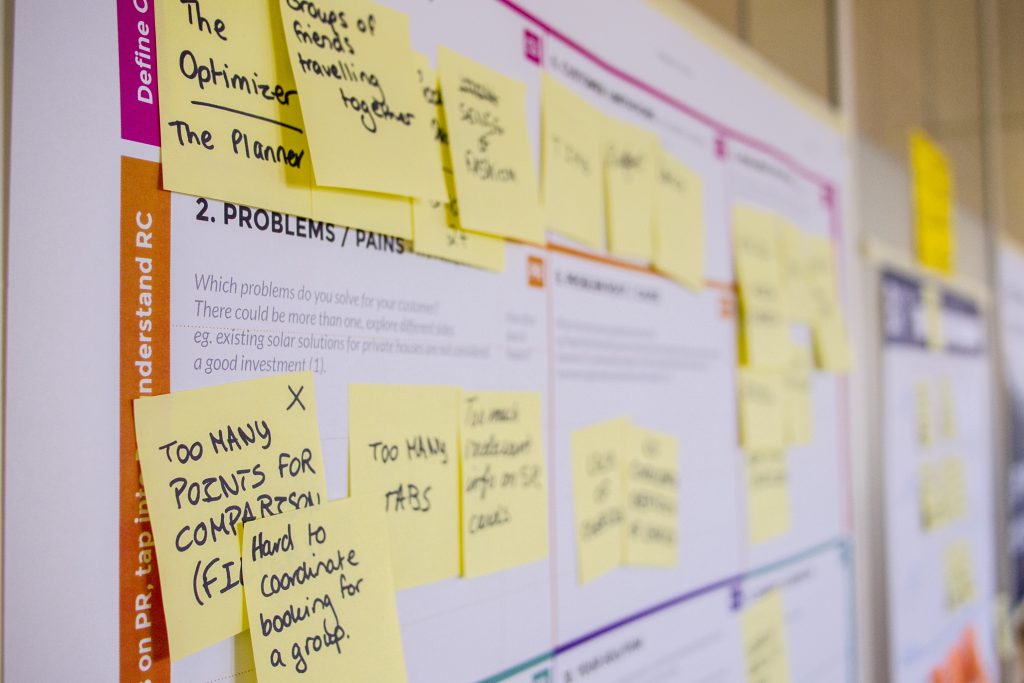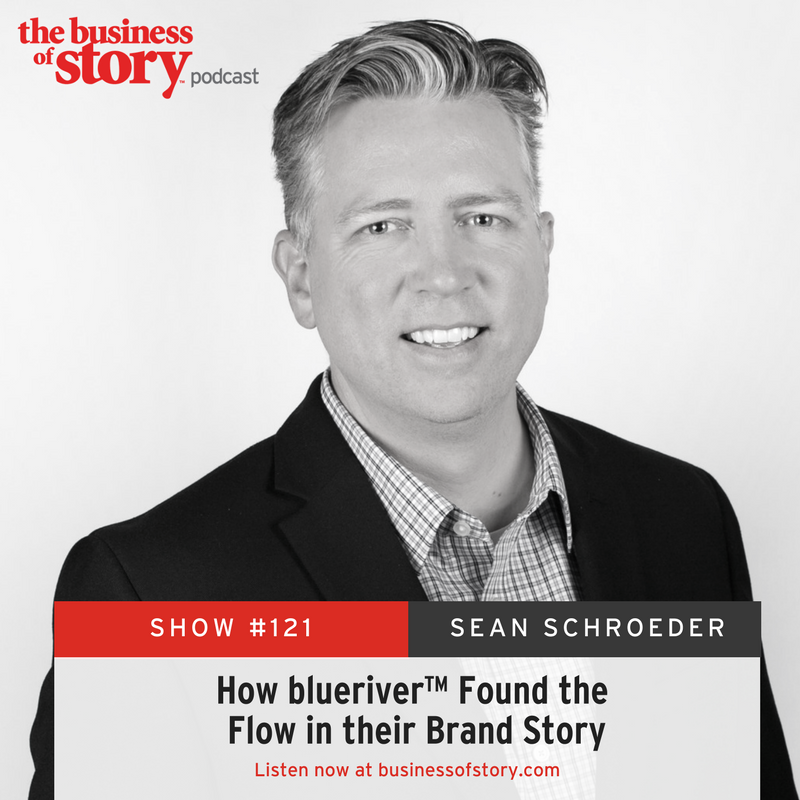Sometimes a facepalm just doesn’t do some mistakes justice.
I recently presented to an enterprise customer. He is the ideal candidate for our product and services. I spent several days preparing a short and to-the-point deck to provide an overview of our business. I prepared a custom demo, making sure it told the story of why we were such a great fit.
It was a big deal to myself and my team. We painstakingly reviewed our presentation leaving nothing to chance except the whims of the demo gods.
We dialed in, got acquainted with everyone on the call and launched into our presentation. Everything seemed to go well, questions were asked and answered with confidence, and it was clear that we could meet their needs. Indeed, they confirmed this at the end of the call.
But it was how they confirmed this that left me wanting to give myself more than a facepalm. One simple statement told me we had failed to stand out:
“This looks like a lot of what we’ve seen so far…”
11 simple words that defined us as a commodity.
It stung. I was disappointed and beating myself up before we even hung up.
A quote from the godfather of integrated marketing, Don Schultz, came rushing back to me:
“Everything we do as an organization can be copied—except—how we communicate.”
This was where we failed.
Even though we had spent the last 18 months undergoing a brand revitalization process that realigned our business in a way I wasn’t sure was possible, I reverted back to old habits due to some constraints and missed an opportunity to connect with a potential customer in a meaningful way.
We didn’t lean in and set the table with why we do what we do by establishing our Unique Value Proposition, or UVP.
What’s a Unique Value Proposition?

Your unique value proposition defines how you’re different in the market. Photo by MJ Beiva on pexel.com
A marketing buzzword? Sales jargon? Some would argue it’s “a stupid fancy name for the specific promise you make to a specific type of customer.” Would they be right? Maybe. Does it matter? Nope.
The heart of the Unique Value Proposition (UVP) is this: It’s a way to succinctly begin the conversation about why you do what you do, in a way that is easily understood. Your UVP differentiates from all of your competition.
Why is it important? Because “why” is important.
As suggested by Don Schulz, and validated by my tale of self-loathing above, it’s easy to get lumped in with your competition based on merely describing what you do. If we don’t “start with why” as Simon Sinek suggests in his now classic Ted Talk, there’s no way to make a meaningful connection with your customers, employees, or audience.
Creating a UVP communicates your “why,” which provides immediate context for everything you do. Indeed, everything you say after establishing your UVP now has meaning. But we shouldn’t stop there. Your UVP should inform and be infused in as much of your story as possible.

One of the challenges our business faced as we’ve grown was a convoluted brand story. What started out simple, became complex and difficult to communicate effectively. The lack of a clear brand story created confusion with our employees and customers.
So, we began a brand revitalization to help align our offering with our people.
Unfortunately, we stalled at the starting gate. The designer who was tasked with heading up the rebranding efforts found it difficult to get traction with the visual communication because he had no way of knowing if he was on track.
We figured it was just a symptom of working on your own brand and decided to hire a local branding agency to help us. We did interviews, we picked a car brand that we felt we most identified with (If you must know, we chose Audi because it was well-designed, sporty but not too hoity-toity), established a brand hierarchy (which was helpful) and reviewed several design approaches including updated logos and typography.
But we were only slightly better off than when we started. Something was missing. That something was a brand story that included a well-crafted UVP.
Finding Flow
Fortunately, we used the Story Cycle brand strategy system to discover our why, and crafted a brand story and UVP inspired by Flow.
Flow is a term coined by psychologist and happiness researcher Mihaly Csikszentmihalyi for the “…the feeling of complete and energized focus in an activity, with a high level of enjoyment and fulfillment.”
Everyone experiences Flow given the right conditions.
What made the concept of Flow so powerful—and actionable—for us was that Flow is at the essence of everything we do, and has been since day one, we just didn’t have a name for it or a way to define and talk about it.
But it was authentic and captured the why we do what we do at blueriver.
Living Our Unique Value Proposition
Defining your UVP is just the conversation starter. For it to resonate, we need to live into our UVP and allow it to infuse our business.
Here’s how we defined our UVP:
“blueriver helps people find flow to simplify and enrich their lives.”
Our goal is to help get you more into your work by helping to create a Flow experience—and as a result, a sense of accomplishment that leads to happiness beyond your work life. Helping you find your Flow is our Why, blueriver and the Mura Digital Experience Platform is the how and what we do to help you achieve those peak experiences.
While this may seem like a tall order for a digital experience agency and software vendor, we’ve identified several ways to help us live into this promise by creating a framework based on the principles of Flow, as defined by Csikszentmihalyi.
Csikszentmihalyi identified eight different aspects of the Flow experience, noting that not all eight need to be present to create the “Optimal Experience State.” We used a subset of five in our framework:
- Create concrete goals for every step
- Clear and timely feedback
- Ensure there is balance between challenge and skill level
- Eliminate distractions
- Eliminate worry of failure
By measuring the digital experiences we create either for our professional service customers or within our software against these 5 principles, we can be deliberate about living into the promise of our UVP.
Here’s how:
1. Concrete Goals

We ensure that every experience leads to a next step. Users who complete small goals should move to larger goals, which in turn steer them toward even larger goals. This linkage creates a series of rewarding experiences that ultimately lead to flow.
Another way we might look at this is as a “continuum” of experiences, says B2B marketing strategist Ardath Albee in her book, Digital Relevance: Developing Marketing Content and Strategies that Drive Results: “There are no stops and starts in a continuum. The flow is consistent, steady, and designed to build the problem-to-solution story with buyers by providing the education, expertise, and evidence they need…”
2. Clear and Timely Feedback
There are many opportunities to provide clear and timely feedback within the digital experience. With form completions and other user interface elements, like slide-out widgets and modals, we always provide a response and a recommended next step. Ad targeting should reflect specific recent behavior from the user to personalize the experience and encourage continued engagement. When feedback occurs directly after (or midway through) the completion of an action, users feel a stronger association between their action and the outcome.
When customers experience errors, provide useful information to avoid missed opportunities. Give them an option to recover their progress or reconnect, including paths to solutions for the more technically inclined.
3. Balancing Challenge and Skill
If I were to challenge LeBron James to a pickup game, he probably wouldn’t feel very invested in the competition. Likewise, as a D League player, I wouldn’t last long against LeBron not only because I couldn’t keep up, but also because there would be no point in trying to. In both cases, motivation is diminished.
Just as a professional athlete would be bored when facing off against an amateur, skilled users require different levels of engagement. We have to find a way to keep challenge in step with skill.
Follow user experience best practices to facilitate goal completion. Make things simple, but never so simple that anything feels tedious. An ongoing sense of accomplishment is paramount.
4. Eliminate distractions
Create experiences that emphasize the relevant and de-emphasize the irrelevant. Consider alternatives to interruptive techniques, like modal windows, which may be effective, but are loathed by people.
When a question of relevance arises, defer to user experience over your own goals. What would a person within this experience want to do? How can you help accomplish the job-to-be-done? Use the principles of flow to create a framework that builds upon each goal, creating a low effort experience for the customer — and further engagement.
5. Eliminate worry of failure
The struggle is real. How many times have you taken the time to complete a long form only to find out that you filled it out incorrectly and have to start over? Or even worse, spent an inordinate amount of time creating an email, blog post or other content, just to find out your session timed out and you lost everything by simply clicking “save?”
To say you’d be frustrated would be an understatement. Instead of feeling a sense of accomplishment, you’re filled with rage, regret, or at a minimum, disappointment.
Eliminating this worry of failure allows us to proceed freely, knowing we’ll get done exactly what we set out do.
While we may or may not be able to achieve these 5 conditions that enable Flow, endeavoring to provides us an easy, measurable, and tangible way to live into our UVP.
Find your tribe

The blueriver™ Mura Experience Platform tribe at 2018 MuraCon Conference in Sacramento, CA.
In Seth Godin’s best selling book, Tribes, he suggests “a group needs only two things to be a tribe: a shared interest and a way to communicate.”
Your UVP is exactly that. And a well-defined UVP will not only attract the people who you’d like most to do business with, it will attract those who most want to do business with you, not only as your customer and partner, but as an employee as well.
Simon Sinek said it well: “The goal is not just to sell to people who need what you have; the goal is to sell to people who believe what you believe. The goal is not just to hire people who need a job; it’s to hire people who believe what you believe.”
We saw this first-hand immediately following the public reveal of our brand story at our annual customer and community summit, MuraCon. Within a couple days following the conference we received an email from someone who wanted to join our team:
“I spent some time looking over the redesigned Blue River website and after reading the Careers page I felt I just had to reach out and express my interest in working for your company…When Sean spoke about “Flow” at the conference it just hit me over the head as that was how I could describe the feeling at the end of every day as I worked on this project.”
Your brand story, your UVP, allows you to find your tribe, simply by articulating your why, and providing the context for the conversation you’re about to have.
Creating a brand story and a Unique Value Proposition isn’t easy. But it’s imperative if you don’t want to fall into the “low-cost leader” category of commoditization. Sometimes it takes some soul-searching. Sometimes it takes asking why, many times over, to find your UVP. But once you do, and discover the ways into which you can live into the promise of your brand, you’ll have a North Star to guide you—and your tribe—to the promised land.

Listen to Sean Schroeder on episode #121: How blueriver™ Found the Flow in Their Brand Story









at 2:26 pm
[…] brands who want to tell an authentic story that provides an honest insight into their history, their value proposition, and who they are, Facebook is the perfect platform for […]